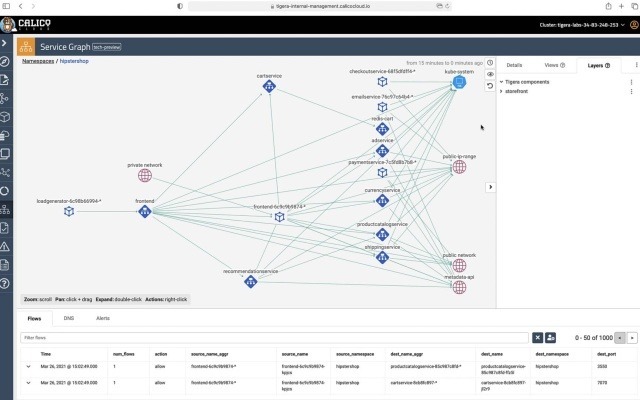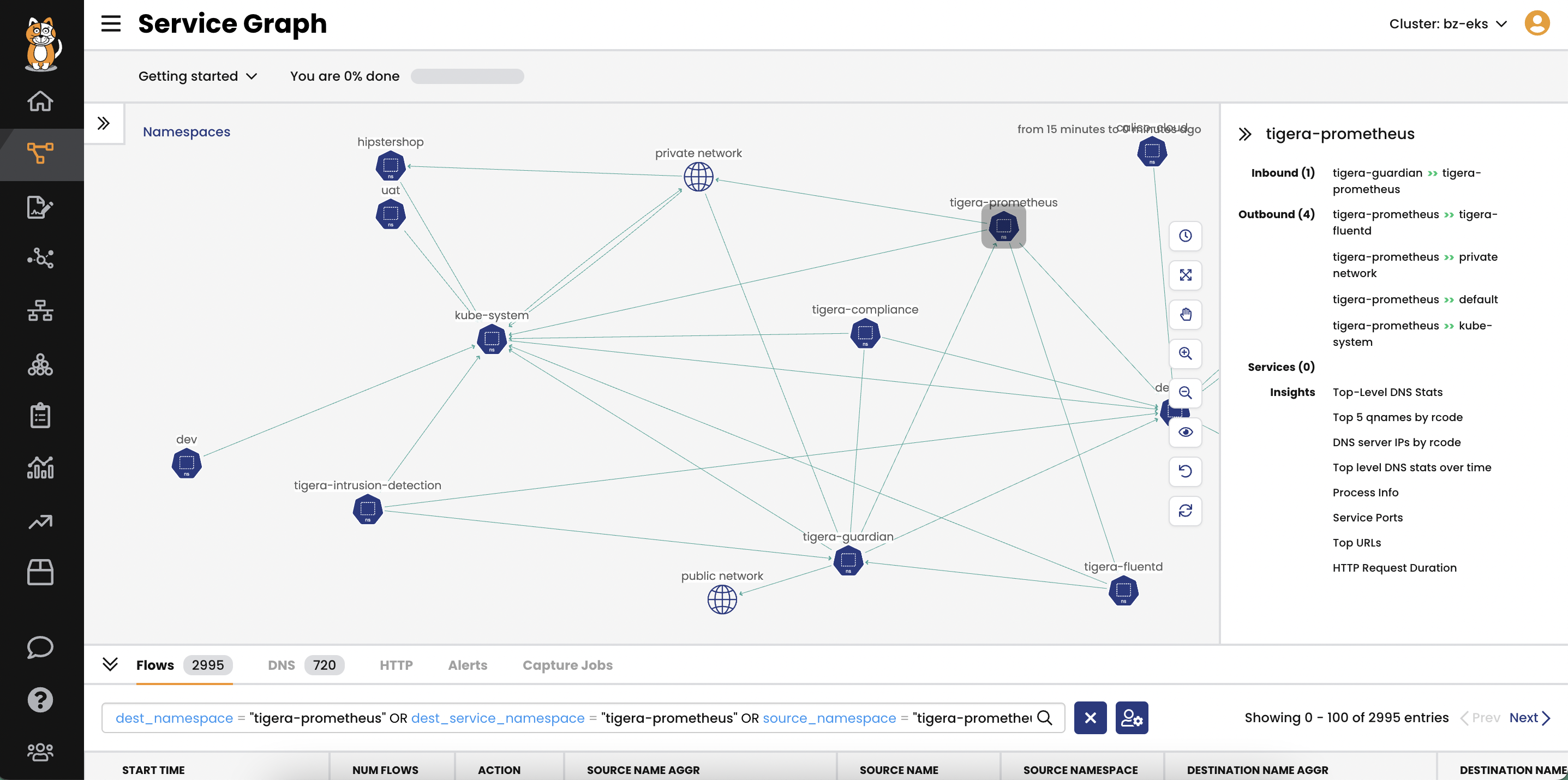Dynamic Service and Threat Graph
Get a detailed runtime visualization of your Kubernetes environment to easily understand microservice behavior and interaction

- Calico Cloud
- Dynamic Service and Threat Graph
Overview
Dynamic Service and Threat Graph provides a point-to-point, topographical representation of traffic within your cluster to observe Kubernetes environment behavior, troubleshoot connectivity issues, and identify performance hotspots. It enables DevOps, SREs, platform operators, and application developers to understand communication between namespaces, services, and deployments. The Dynamic Service and Threat Graph includes a rich set of tools to filter resources and save views. Selecting a node or edge on the graph displays detailed networking and DNS activity, while automatically filtering the raw flow log data.
Kubernetes environments often have hundreds of components, each with its own set of metrics. The “Layers” capability in Dynamic Service and Threat Graph provides a unique way to manage the scale of the graph, allowing you to group components depending on their role and easily hide and show them as part of a saved view. This enables users to create custom views to simplify observability and troubleshooting of specific use cases.
Benefits
Quickly identify and troubleshoot service-level connectivity issues that impact cluster applications by leveraging the unique perspective provided by the Dynamic Service and Threat Graph
Live Dynamic view
Observe microservice activities and interactions within a Kubernetes cluster with a dynamic live view that helps identify and troubleshoot connectivity issues faster
Live troubleshooting
Identify, troubleshoot and apply fixes in live Kubernetes environments by analyzing traffic flows, network, and security policies simultaneously within the graph
Real-time insights
Get a real-time understanding of all upstream and downstream dependencies of microservices in a Kubernetes cluster and identify any performance hotspots and security gaps
Custom views
Build and save custom views that are tailored to specific use cases for quick reference and recall; leverage Layers to group and segment resources within a cluster to effectively manage scale
Shareable views
Standardize, save and share views tailored to your requirements at the platform, microservice, or application level for faster troubleshooting and easier onboarding for new team members
Kubernetes context-rich information
Leverage annotated graphs with Kubernetes context and performance metrics, such as status codes, latency, user agents, and URLs to speed up problem resolution across different teams
Capabilities

- Provides point-to-point, topographical representation of microservices within a cluster
- Displays how workloads, microservices within the cluster are communicating, and across which namespaces and pods
- Provides layers to group resources based on application developers’ and platform operators’ tailored views for their use case
- Provides metadata on ports, protocols, and how network and security policies are being evaluated
- Provides alerts that are annotated directly on the graph
- Includes advanced capabilities to filter resources and save views
- Includes an interactive graph to visualize microservice connections, the volume of connections, and connectivity
How It Works
Descriptive Summary Learn how Calico’s Dynamic Service and Threat Graph can provide you with the Kubernetes observability you need.